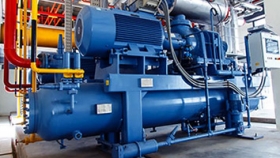Knowing about chiller components and parts helps us better understand the function of this complicated system. In fact, unlike most people thought, chiller doesn't produce cold. It removes heat.
Generally, chiller facilitates heat transfer from an interior space to an exterior one. Its function depends on the physical status of the refrigerant which circulates in the system. Chillers are the hearts of every central air conditioning system.
Here, we are going to introduce the main components of a compression chiller system.
Compressor as the main chiller component
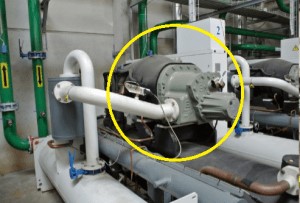
The main difference between a compression chiller and other types of chillers is the compressor component. Other chiller components and parts can be found in other chillers too. Compressor is the main driver which creates the necessary pressure difference to move the refrigerant throughout the whole system. Different types of compressors are:
- Reciprocating compressors
- Screw compressors
- Scroll compressors
- Centrifugal compressors
Each of these types of compressors have their own advantages and disadvantages but are always located between the evaporator and condenser. We talked about the four types of compressors and their functions in the article "Main refrigerant system components".
This main chiller component is rather insulated and contains an electric motor to supply the required power. The motor is located inside or outside the compressor.
Note: compressor is a noisy chiller component. So, if you have to stay closer to the compressor for doing service or repair, make sure to use air safety equipment.
Condenser as the chiller heat exchanging component
Condenser is another chiller component in charge of getting heat from the refrigerant. There are two mediums for this heat transfer to change the refrigerant gas to liquid: water and air.
So, there are two kinds of condensers:
- Air-cooled condensers
- Water-cooled condensers.
Chiller air-cooled condensers
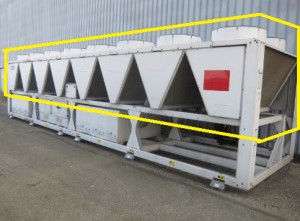
They use air as the external fluid to remove heat. The air is sent over a network of tubes which are called coils by a fan to turn the refrigerant to liquid. Condensing the refrigerant gas in this kind of condenser leads out the heat.
Note: the air temperature for the air-cooled condenser to operate efficiently should be 35˚C or lower.
These condensers are cheaper to install, service and repair than the water-cooled condensers. They occupy less space and should be installed outdoors.
Tip: air-cooled condenses are usually used in regions in shortage of water to be used with water-cooled condensers.
Chiller water-cooled condensers
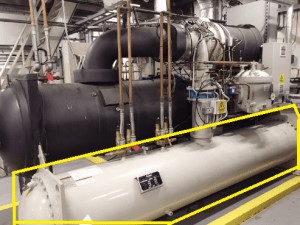
The function of this condenser is just like the air-cooled one but it contains two stages to complete heat transfer:
- Heat is transferred from the refrigerant gas to the condenser water.
- The hot water in the condenser is pumped to the cooling tower to be led out.
So, there is also a cooling tower with this chiller component.
The capacity of these condensers varies from small models of 20 tons to several-thousand-ton condensers. The big ones are used for cooling large spaces like airports and shopping malls.
Tip: water-cooled condenser is more stable and the air temperature fluctuation doesn't have much impact on its function. It is used in regions with good water reservoirs.
Expansion valve as the chiller controller component
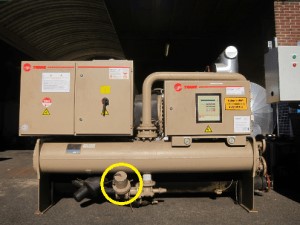
Expansion valve controls the amount of refrigerant entering the evaporator because evaporator needs a certain amount of liquid refrigerant to accomplish the heat transfer. In fact, the expansion valve creates a balance between the appropriate amount of liquid refrigerant and the correct amount of superheat.
Tip: expansion valve doesn't directly affect the evaporation process but regulates the superheat inside the evaporator through the input refrigerant.
There are different kinds of expansion valves like: thermal expansion valve, thermostatic expansion valve, automatic expansion valve, electronic expansion valve, low pressure float valve and high pressure float valve.
Tip: thermostatic and electronic expansion valves are the most common mechanisms for controlling the refrigerant volume in chiller systems.
Evaporator as the chiller refrigerant evaporating component
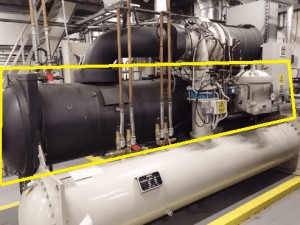
Evaporator is another chiller component which is located just after the expansion valve and before the suction tube of the compressor. It collects all the unwanted heat of the environment and transfers it to the refrigerant to evaporate. The refrigerant gas then goes to the compressor.
Note: the chiller evaporator should be insulated to make sure the environment heat doesn't enter it to affect its function.
Chiller evaporators are in different types like: shell-and-tube evaporator, plate evaporator, shell and coil evaporator.
Electrical panel as he chiller electric component
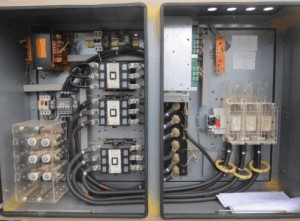
This electric chiller component can be directly installed on the chiller or on an individual wall near the chiller. It controls the electric current into the chiller and contains different components like the main start key or the fuses.
What we mentioned here was the five main chiller components. Chiller is made of some other components too like the hand valve, filter dryer, solenoid valve, sight glass and accumulator. If you need more information about all chiller components and also the whole function of the chiller, don't miss the refrigeration training course in HelloTechnic website. Our instructors will offer you the most recent and complete training about cold room and chillers to make you a professional repairman.

